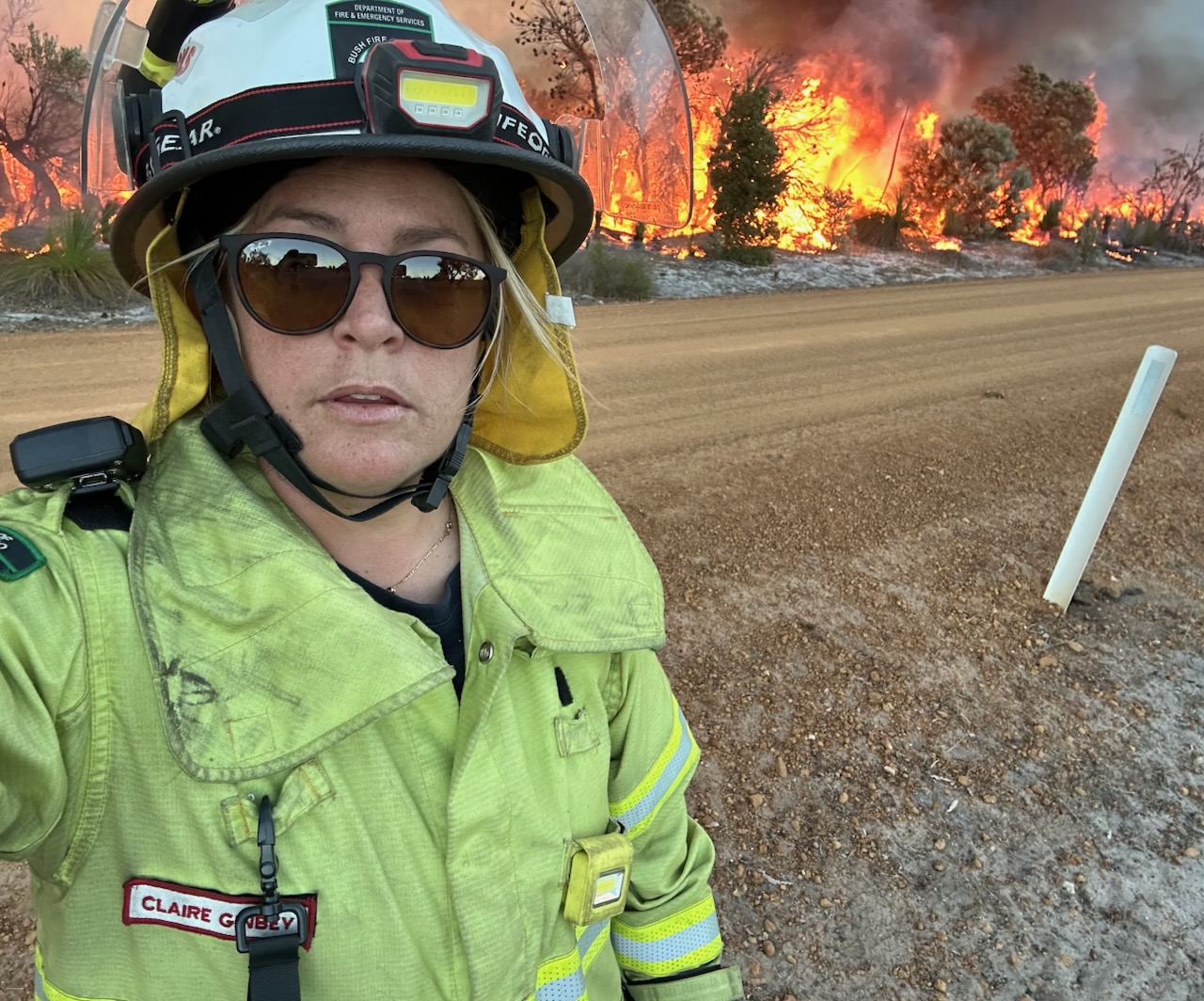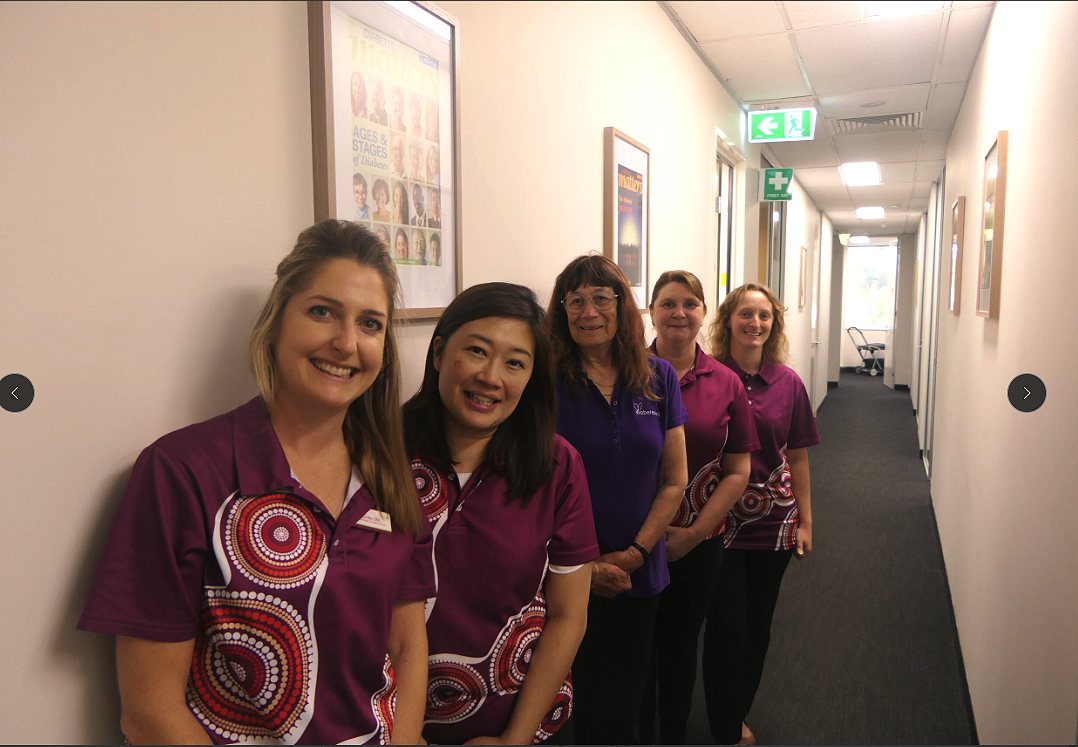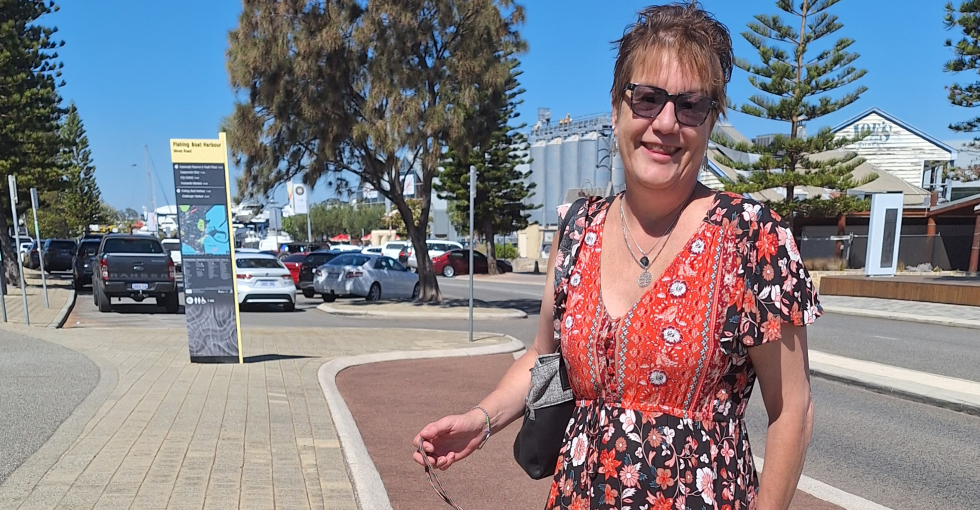An insulin pump gives business advisor and volunteer firefighter CLAIRE GIBNEY far more flexibility in managing her type 1 diabetes.
“I’ve had type 1 diabetes since I was thirteen. I went on a Medtronic pump when I was about 15 but it didn’t suit my lifestyle as I was playing sport and bodyboarding, plus my skin reacted to the tape, so it didn’t last long, and I went back to finger pricks and insulin pens.
Then, when I turned 40, some results came back that were worse than I’d anticipated. Until then, I’d been blissfully ignorant, but now I needed to prioritise my health.
I asked my GP about a CGM (continuous glucose monitor), and he suggested seeing a diabetes educator. My first educator put me on a trial CGM to see how my skin reacted, and recommended Diabetes WA for insulin pump advice. I walked into that first appointment with limited knowledge – it’s amazing what you forget over time – but at no point did I feel judged.
I learned that the pump technology had come a long way, and I felt it was time to give it another try. The Omnipod 5 was not available until mid-March, and I wanted that one because there are no tubes and it’s small, so I used a CGM until then.
Getting used to the tech wasn’t all smooth sailing. For the first four days my sugar level flatlined at 6.5 and barely moved from that level, but on day five I was woken at 3am when my glucose suddenly increased. Everything was alarming at me. I’d taken the week off work to give the pump my full attention, I was eating healthily and my glucose was within target.
I thought I must have sleep-walked and eaten something, but I started googling and realised that it’s not just food, it’s also hormones and emotions and other factors that can affect your blood glucose.
Within a four-week period I had gone from being blissfully ignorant to being aware of exactly what my body was doing. I almost regretted wanting to take control because it made me realise how much I’d neglected my diabetes in the past. If my emotional state could affect my levels so much, what had I put my body through over the last ten years?
I was also panicking because I really needed the pump to work and had no idea how I would manage my diabetes in the future if it didn’t. I don’t cope well feeling like I am failing at something, which is probably why I’d had my head in the sand for the past 10 years.
I went back to the educator, saying I felt like was failing at adapting to the new pump. She told me: “This is the quickest transition I’ve ever seen. You can’t change the past but what you can do is use it to your advantage now.” I realised I had to shift my mindset and make the most of the opportunity.
I’m also a volunteer firefighter, so we needed to think about what the heat of a fire might mean for an insulin pump. I joined the service about a year ago as I felt I was missing a purpose in life outside of work. Volunteer firefighting keeps me active and there is a real sense of community within my brigade.
The day of my Omnipod implementation session, I’d been at a fire most of the night so hadn’t slept. The educator asked me if I wanted to postpone, but I said, “No, I’ll just take a lot of notes” as I didn’t want to lose momentum in gaining better control of my diabetes.
As a volunteer firefighter, I’ll receive a message and, if I can be at the station within 15 minutes, I will attend the incident. I was interested to know how my body would react to the cortisol and adrenaline when I responded to a call. The technology is so good now that my health professional could have logged in and tracked what my pump and CGM were reporting in real time.
As it turned out, my glucose levels remained constant. Volunteers mainly put out bush fires and we are not typically exposed to intense heat. My pump is under my PPE clothing, and I’ve had no issues with it not operating properly.
Having a pump allows for a lot more flexibility as I don’t need to pre-empt as much. I’ll still carry muesli bars and lollies in my fire jacket but, because I’m still getting that basal insulin delivery, mealtimes are far less regimented.
The brigade is supportive, and I have never felt like my diabetes has impacted my ability to volunteer; in fact, most of my colleagues love it because of my red jellybean supply. As an organisation they are obviously safety focussed and they basically said to me – “We have qualified first aiders, you know your body best, just let your crew leader know when you turn out and if you don’t feel good speak up, because your safety is our priority.”
The pump is essentially a pancreas outside my body.
I’m now using a third of the insulin I was prior to being on a pump. Suddenly, I don’t have to have think about it nearly as much. All I do is tell the pump 15 minutes prior to eating or drinking something and put in the estimated carbs then hit “use sensor.” The pump accounts for how my BGL is trending and automatically calculates the insulin required.
This has reduced my decision making a lot. It’s essentially a pancreas outside my body. It gives peace of mind to my family as well – if I am sleeping late after a fire in the night and have not been active on messenger or answered my phone, they can simply check my BGL level on their device and I can continue to sleep!
Having said all that, the costs add up. I have private health cover, but I’m still paying a monthly subscription as my policy has a 12-month waiting period for insulin pumps. Fortunately, I was able to build a budget that could sustain the cost until my waiting period ends.
It concerns me that many people can’t afford the monthly cost. It’s sad, because for me it’s been such a game changer. If the government subsidised this technology, there would be a definite return on investment as better diabetes management could take the strain off an already inundated health care system.
Being on the CGM and the Omnipod has made me more in tune with both my physical and mental state and how it is impacting my BGL. I now understand the correlation between type 1 diabetes and anxiety, and I want to remind people that they are not alone if they feel anxious or overwhelmed.
Now, for the first time since leaving the care of PMH as a child, I can say there are people out there to help me. I have been lucky to find key people that I quickly connected with and now have a balanced team in my corner. When you find people that don’t make you feel like a number and that are invested in your wellbeing, that cloud of anxiety lifts.
It’s been a big five months, but I’m coming out the other side. I feel the best I have in a long time. I can manage my diabetes and live the life that I want to. A big shout-out to those that have walked beside me this year. You have made this journey much easier, and I am forever grateful.”
Are you interested in learning more about insulin pump start-ups?
The Diabetes WA Clinic is a person-centred service designed to support you to self-manage your diabetes.
One-on-one appointments are available both online via telehealth and face-to-face at our Subiaco, Maddington and Port Kennedy locations with a credentialed diabetes educator, dietitian or exercise physiologist.
We also hold regular Type 1 Tech Nights where you can learn about the latest technology and chat with company representatives.
Sign up for our T1DE newsletter below to hear about upcoming nights.




